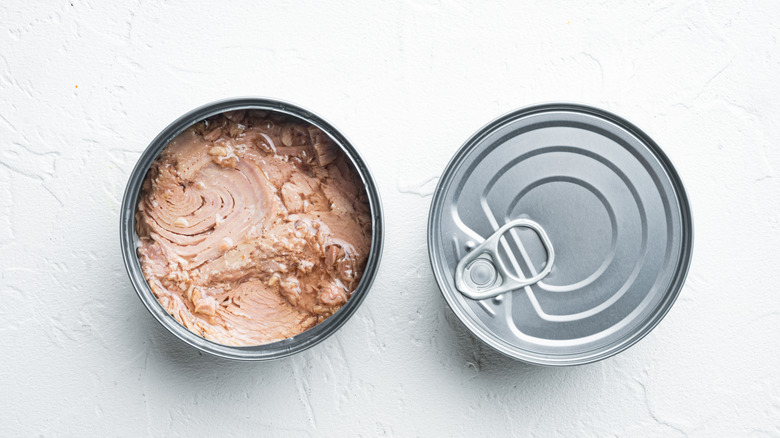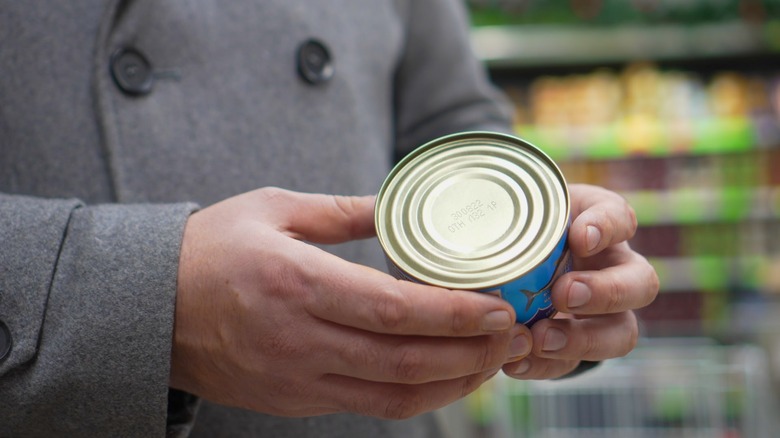Does Canned Tuna Ever Actually Go Bad?
Although sometimes touted as lower quality than fresh, canned meat has its benefits. From flavor preservation to affordability and a lengthy lifespan, canned meat is convenient and easy to use. Plus, it retains the proteins, fats, and nutrients found in fresh, whole meat. Among the many canned meats you can find at supermarkets, canned tuna is one of the most popular. In fact, canned tuna is the second most popular seafood item in America. But does it ever go bad?
The short answer is yes, canned tuna does eventually go bad. But according to the United States Department of Agriculture, commercially canned tuna will last for up to five years — plenty of time to put it to use. However, home-canned tuna will last for only one year. Bear in mind that when the can is not properly stored, it can corrode and rust, destroying the tuna and hastening the expiration process.
Proper tuna can storage
Five years is a long time with a can of tuna, but it's easy to reduce its shelf-life by not properly storing it. For starters, keep unopened canned tuna in a cool, dark place such as a pantry or a snack cupboard. Storing the can at room temperature is essential as high temperatures can accelerate the deterioration of the tuna or cause the can to swell or burst due to the expansion of the food and gases. Avoid exposing the can to any moisture, as this facilitates rust and damage to the metal.
If you've opened a can of tuna but only used a small portion of it, you should immediately store the leftovers in the refrigerator where they will stay fresh for up to four days. So, what's the best way to store this opened canned tuna? Although you can keep the tuna in the can covered with a universal can lid or foil, it's best to transfer the remaining tuna to an air-tight container such as a lidded jar or resealable plastic bag to maintain flavor and freshness. Pro tip: Your leftover canned tuna oil makes a flavorful fried egg.
Recognizing signs of spoilage
Canned tuna is a hearty and enduring food that boasts an extensive shelf life, and as long as you properly store it, you'll get the most out of those five years. However, recognizing signs of spoilage and expiry is hugely important for food safety.
If you notice extreme changes in the tuna can's shape — ditch it. A bulging tuna can is a common sign of spoilage, indicating gas production from microbial activity and chemical reactions inside the can. Similarly, deeply dented cans, especially those close to the seal, can invite bacteria into the tuna. Rust is another sign that it's time to replace your can of tuna, as the chemical process of rust development can cause tiny holes to open on the surface of your can.
Because of the can's low-oxygen conditions, mold is not likely to grow on an unopened can of tuna. But just because you can't see mold, doesn't mean it isn't there. To err on the side of caution, stick to the USDA guidelines and consume the tuna within five years. Of course, if you notice mold or foul smells on your leftover tuna, ditch it immediately.
Whether you're using it for a traditional tuna salad recipe or an upcoming hiking trip, get the most out of your tuna can by maintaining high standards for food safety. Safe eating is happy eating!


